Stadtman Investigators
Meet 18 New Stadtman Investigators
BY THE NIH CATALYST STAFF
Neurodevelopmental cell regulation, environmental and occupational exposures, and precision therapies are just a few examples of the exciting new research explored by the latest cohort of scientists selected for the Earl Stadtman Tenure-Track Investigators Program.
The Stadtman program, which began in 2009, is named for renowned biochemist, senior investigator, and mentor Earl Stadtman (1919–2008), who devoted his 57-year NIH career to identifying the mechanisms of cellular energy expenditure and metabolism.
The program crosses all areas of biomedical research, designed to attract a diverse group of talented early-career scientists who might not typically apply to NIH via general searches conducted by individual institutes and centers (ICs).
Here, the NIH Catalyst introduces the 18 Stadtman investigators who were part of the 2020 recruitment cycle and joined various NIH ICs between 2021 and 2022.
Michael Aregger, Ph.D., NCI-CCR

Functional Genomics Section, Molecular Targets Program
https://irp.nih.gov/pi/michael-aregger
Research: Applies functional genomics approaches to study genetic dependencies in renal cell carcinomas and examines how cancer cells rewire gene expression and metabolism to adapt to changing environmental conditions.
Became Stadtman Investigator in 2021.
A. Rouf Banday, Ph.D., NCI-CCR
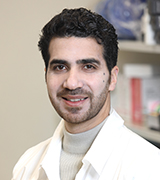
Genitourinary Malignancies Branch
https://irp.nih.gov/pi/a-rouf-banday
Research: Explores the genomic alterations that govern the development of bladder cancer and confer resistance to therapies.
Became Stadtman Investigator in 2022.
Dan Benjamini, Ph.D., NIA
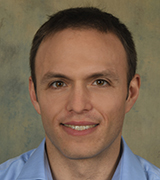
Multiscale Imaging and Integrative Biophysics Unit
https://irp.nih.gov/pi/dan-benjamini
Research: Investigates the relationship between microstructure, chemical composition, and function in the aging brain, with a focus on neurodegeneration and neuroinflammation, by extending the functions and use of magnetic-resonance imaging.
Became Stadtman Investigator in 2021.
Cornelis Blauwendraat, Ph.D., NIA
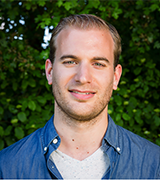
Integrative Neurogenomics Unit
https://irp.nih.gov/pi/cornelis-blauwendraat
Research: Dissects the genetic architecture of Parkinson’s disease and other neurodegenerative diseases using a variety of genomic methods and techniques.
Became Stadtman Investigator in 2021.
Lisa D. Boxer, Ph.D., NCI-CCR
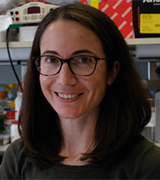
Laboratory of Genome Integrity
https://irp.nih.gov/pi/lisa-boxer
Research: Explores the role of chromatin regulation in neural development and how mutations in chromatin regulators lead to neurodevelopmental disorders and cancer.
Became Stadtman Investigator in 2022.
Li Cheung, Ph.D., NCI-DCEG
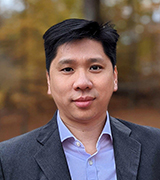
Biostatistics Branch
https://irp.nih.gov/pi/li-cheung
Research: Develops novel statistical approaches to characterize the etiology and natural history of cancer and collaborates with epidemiologists and clinicians to translate those statistical insights into novel precision prevention strategies.
Became Stadtman Investigator in 2021.
Patrick Dolan, Ph.D., NIAID

Quantitative Virology and Evolution Unit
https://irp.nih.gov/pi/patrick-dolan
Research: Studies the evolution and host-virus interactions of positive-sense RNA viruses, such as Picornaviridae and Flaviviridae, using experimental and computational tools.
Became Stadtman Investigator in 2021.
Akintunde Emiola, Ph.D., NIDCR
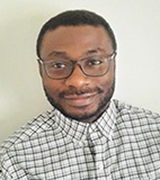
Microbial Therapeutics Unit
https://www.nidcr.nih.gov/research/conducted-at-nidcr/investigators/akintunde-emiola-phd
Research: Explores the microbiome to predict disease and outcomes, develops ways to modulate the microbiome to improve human health, and is specifically interested in developing antimicrobial prodrugs and phage therapy strategies to inhibit detrimental oral pathogens while preserving beneficial commensals.
Became Stadtman Investigator in 2021.
Ashley Elizabeth Frakes, Ph.D., NIDDK

Glial Biology Section, Genetics and Biochemistry Branch
https://irp.nih.gov/pi/ashley-frakes
Research: Aims to understand how glial cells, the non-neuronal cells in the brain, regulate aging and disease to identify the required components of this response, which may produce novel therapeutic targets to prevent or delay age-onset disease.
Became Stadtman Investigator in 2021.
Carlos Guardia, Ph.D., NIEHS
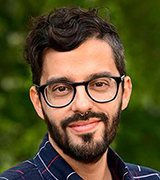
Placental Cell Biology Group; Reproductive and Developmental Biology Laboratory
https://irp.nih.gov/pi/carlos-guardia
Research: Applies basic science mechanisms to understand the effect of environmental stressors on human pregnancy, with a particular focus on placenta development, structure-and-function processes, and in vitro placenta modeling.
Became Stadtman Investigator in 2021.
Masaru Kanekiyo, D.V.M., Ph.D., NIAID

Molecular Immunoengineering Section; Vaccine Research Center
https://irp.nih.gov/pi/masaru-kanekiyo
Research: Explores the vaccine-host interface to define immunological principles that inform the design of effective vaccines against challenging targets such as influenza virus.
Became Stadtman Investigator in 2022.
Alexander Keil, Ph.D., NCI-DCEG
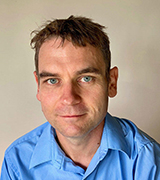
Occupational and Environmental Epidemiology Branch
https://irp.nih.gov/pi/alexander-keil
Research: Applies statistical and theoretical methods to estimate human health effects of exposure mixtures from occupational and environmental exposures across the life course.
Became Stadtman Investigator in 2022.
Mikhail Kolmogorov, Ph.D., NCI-CCR

Cancer Data Science Laboratory
https://irp.nih.gov/pi/mikhail-kolmogorov
Research: Develops algorithms, mathematical models, and tools using computational genomics to address fundamental questions about living systems through the analysis of large-scale sequencing data.
Became Stadtman Investigator in 2022.
Gabriel Starrett, Ph.D., NCI-CCR

Laboratory of Cellular Oncology
https://irp.nih.gov/pi/gabriel-starrett
Research: Explores how tumor viruses, including polyomaviruses and papillomaviruses, contribute to the development of cancer using sequencing, bioinformatics, and classic wet bench molecular biology.
Became Stadtman Investigator in 2021.
Kosuke Tamura, Ph.D., NIMHD

Socio-Spatial Determinants of Health Laboratory
https://irp.nih.gov/pi/kosuke-tamura
Research: Investigates how neighborhood physical and social environments affect cardiovascular disease risk among minority groups using geospatial methodologies, such as geographic information systems and global positioning systems.
Became Stadtman Investigator in 2021.
Leandro Vendruscolo, Ph.D., Pharm.D., NIDA
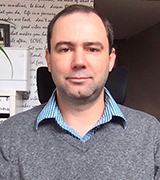
Stress and Addiction Neuroscience Unit
https://irp.nih.gov/pi/leandro-vendruscolo
Research: Studies the neurobiology that underlies drug- and stress-related behaviors; and develops new models of drug addiction and investigates the neurobiology of enhanced drug taking and drug seeking based on the concept that these maladaptive behaviors involve neurotransmitter imbalance in brain regions that are involved in reward, stress, and executive function.
Became Stadtman Investigator in 2022.
Mark Wagner, Ph.D., NINDS
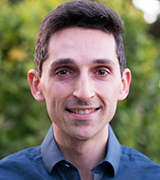
Neocortex-Cerebellum Circuitry Unit
https://irp.nih.gov/pi/mark-wagner
Research: Observes the interaction between the two major brain centers of learning, the neocortex and the cerebellum, to characterize their connectivity and model the system dynamics to extract the basic neural computations that support our ability for general learning.
Became Stadtman Investigator in 2021.
Quan Wang, Ph.D., NIDDK

Section of Nanoscale Single-Molecule Dynamics, Laboratory of Chemical Physics
https://irp.nih.gov/pi/quan-wang
Research: Explores and develops new and improved methods that expand the capability of single-molecule fluorescence spectroscopy in solution to gain biophysical insights by directly monitoring processes.
Became Stadtman Investigator in 2021.
For more information on the Stadtman program, how to apply, and links to stories about other Stadtman investigators, go to https://irp.nih.gov/careers/trans-nih-scientific-recruitments/stadtman-tenure-track-investigators.
This page was last updated on Monday, December 2, 2024
